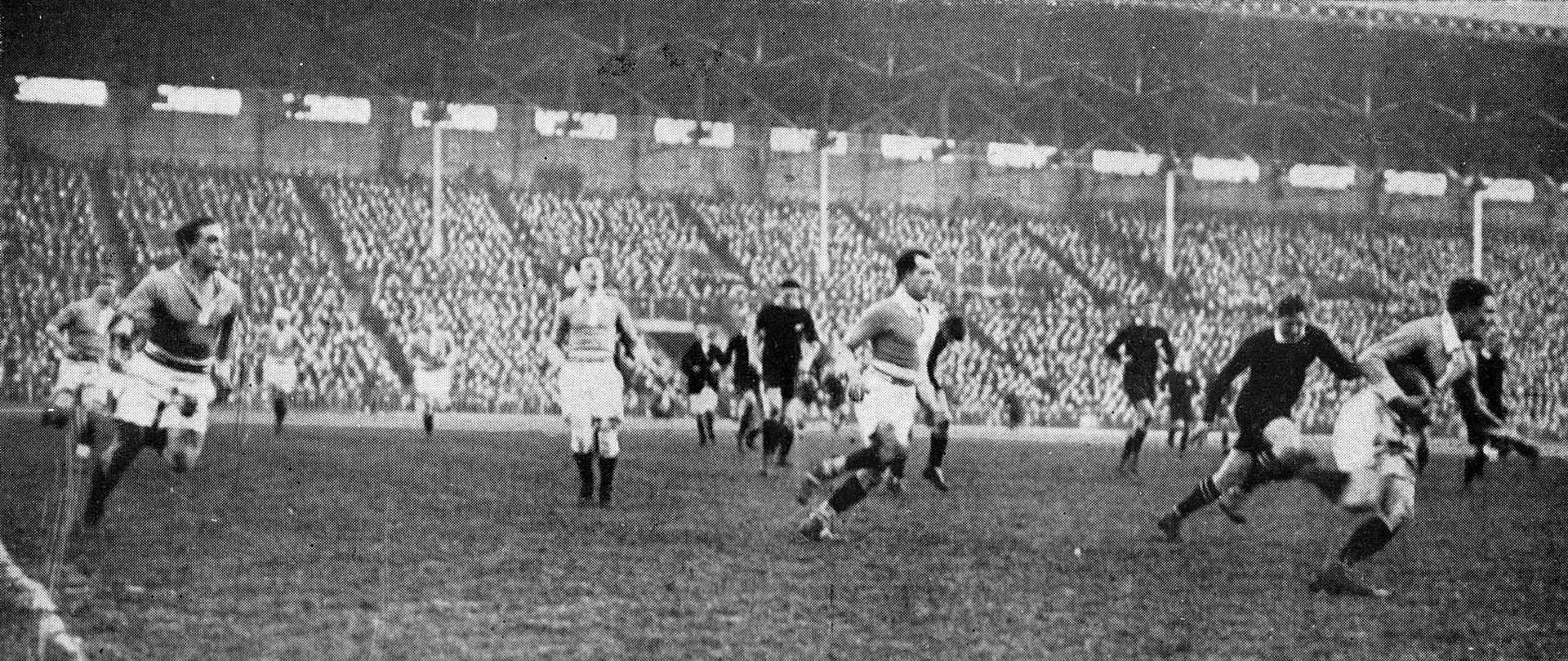Exhibition tells All Blacks’ war stories and highlights rugby’s societal impact
When Colin Gibbons found out a museum was being built in France to honour the Kiwi men and women who served in World War One, he knew it needed a dedicated rugby exhibition.
“Dave Gallaher, the captain of the 1905 Originals All Black team, died tragically in World War One,” says Gibbons, of one of New Zealand rugby’s most famous names. “There were 93 All Blacks among the almost 100,000 Kiwis who served in the first World War. Thirteen of those All Blacks, including Gallaher, were killed.”
Gallaher is buried at Nine Elms British Cemetery in Belgium near the town of Poperinge which is 100km from Le Quesnoy in north-east France, the location of the New Zealand Liberation Museum – Te Arawhata which opens on October 11.
The idea of a rugby exhibition was born during a conversation Mr Gibbons had with Sir Don McKinnon, the chair of the trust building the NZ Liberation Museum, who is a close family friend.

Dave Gallaher 1905, Credit – Archives New Zealand
“There needed to be part of the museum that documented how rugby started in New Zealand, how many All Blacks and provincial and club players fought in the war, how New Zealand became the leading test playing nation, and the important part the game played in our country as it developed.”
Mr Gibbons’ enjoyment, involvement, and love of rugby and the history of the game is no surprise given he is a proud old boy of Nelson College, the site of New Zealand’s first ever rugby game held on Saturday, May 14, 1870.
“It was between Nelson Club and Nelson College at the Botanical Reserve. Charles Monro, who was the instigator of the game and regarded as the person who introduced rugby to New Zealand, played for the club side which won 2-0.”
Mr Gibbons and his friend Hugh Jones have helped fund the development and installation of the exhibition, From the Field to the Front, at the NZ Liberation Museum – Te Arawhata.
The main part of the museum is dedicated to telling the story of the liberation of Le Quesnoy by Kiwi soldiers with an innovative visitor experience created by Wētā Workshop. However, From the Field to the Front will be located in a separate gallery space which can be changed out for future exhibitions.
Curated by Jo and Steve Brookbanks, and designed by Nick Eagles from The Letter Q, the exhibition is not just for rugby fans, and highlights the standing the game holds in New Zealand’s cultural fabric.
Jo Brookbanks, a Public Progamme Content Specialist at Auckland Museum, says they wanted to tell a far broader story with rugby and Dave Gallaher and the 1905 All Blacks at its centre.
“It’s a look into our society because the rugby players are also just sons and husbands, and they have people at home worrying about them the whole time. They’re just doing what they can to get through each day and one of the things that helped them get through was playing rugby with their mates.”

France vs All Blacks 1925, Credit – Postcard Unknown author
The exhibition also extends beyond the All Blacks, including profiling the Māori All Black teams and a women’s team, resplendent in long skirts and blouses, playing rugby against soldiers in a fundraising game from 1915.
Brookbanks laughs about the quotes from the game that featured in the Dominion newspaper on April 24, 1916, under the headline: BURLESQUE FOOTBALL AT ATHLETIC PARK
“Soon after 3 o’clock the ladies’ team made their appearance on the field and began throwing the ball about with a skill that promised well for their chances. The ladies won, of course, but what they won by, or how, no one knew or cared.”
“It’s gold,” says Brookbanks. “I just love how they are wearing the hobble skirts and blouses while playing rugby and just having a real fun time of it.”
For Brookbanks, the All Blacks and rugby players who went to war, were a microcosm of society.
“You’ve got guys who went who were very gung-ho, they were up for it, and it was an adventure. Then you had reluctant guys who did not want to go and were conscripted.
“You’ve got men who received medals, and then you’ve got men who had trouble with discipline and ended up getting field punishment Number 2. All these different blokes who had experiences of war, but the common denominator was that they played rugby as well.
“These men who went and had this common experience, it was almost like it was rugby that got them through. At every touch point, whether it was training or just being able to get away from the front lines, rugby was this thread woven through their experiences as being a New Zealand man at that time.”
The exhibition also documents how the game was impacted back home by the war effort, including strong recommendations to stand down war-aged men from playing rugby to ensure they didn’t get injured.
“It’s quite intense with schoolboys taking their places on the field so there were still games for people to watch.”
On the soldiers return home, the impact of injuries was felt right across society and different sectors including many All Blacks who had their playing careers prematurely cut short.
“There were farmers who would have got home and not be able to farm, or someone with a terrible facial disfigurement and came home and was shunned by society.
“That’s what the exhibition portrays – a slice of society through the lens of rugby. These stories of young men are deep, and quite sad, but very moving.”
Hero Picture: Original All Blacks, Credit – National Library of NZ
